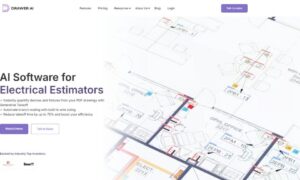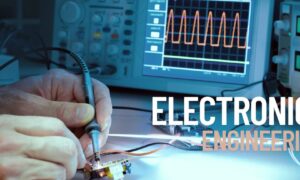Linear actuators are very useful components of modern machinery. They provide controllable linear motion for horizontal or vertical displacement. Some of them can be used in very harsh environments and are therefore referred to as heavy-duty actuators.
The actuator idea has existed for several centuries. The aelopile, invented by Hero of Alexandria, is an example of an early actuator of this type. It moved through the use of steam. But it was in the 1670s when a more refined actuator idea was born. It was a steam-powered piston. Dennis Papin is credited with the invention. This device was used in early steam machines, including locomotives.
However, the modern actuator was invented in 1938 by X. Anckeleman by using a compressed air cylinder. This was a pneumatic linear actuator. For several decades, pneumatic and hydraulic actuators were vastly used in heavy-duty applications. But a breakthrough came in 1979 with the invention of the electric heavy duty actuator. Bent Jensen, a Danish engineer, had this brilliant idea that favored innovation.
Over the years, electric actuators have been taking over all heavy-duty applications in different industries. There are good reasons to prefer this technology:
- Electric actuators are much more precise;
- One can scale up easily to meet any purpose;
- These actuators can be integrated into a network easily;
- Programming these devices is relatively easy;
- The motion of an electric actuator is fully controllable;
- Quiet and clean operation.
There are some applications for which electric actuators are not the best solution. For instance, in areas where flammable substances are present, pneumatic actuators are safer than electric ones. However, in many other industrial applications, electric actuators are the norm. So, below, we list the top 5 places in which heavy-duty linear actuators are used.
1. Manufacturing Applications
Manufacturing is one of the areas in which heavy-duty actuators have the most applications. Some of the most common industries for which these devices are used include automotive, aerospace, and many others. The use of electric actuators in these heavy-duty applications helps to reduce maintenance costs. Moreover, the leak risks associated with hydraulic and pneumatic solutions are inexistent.
Heavy-duty actuators in the manufacturing industry perform tasks such as bending, molding, and crimping. But there are many other applications in which high-force linear movement is needed.
2. High-Risk Motion
Because of their precise movement, linear actuators can perform some tasks that usually humans would do. This is particularly useful in some applications that involve high risk for the safety of humans. For defense purposes such as the deactivation of explosives, heavy-duty actuators are the ideal solution. But also some aerospace applications, as well as simulation, involve high risk. Thus, heavy-duty actuators can be used for a myriad of tasks such as weapon loading, cargo conveyors, door actuation, and many more.
3. Material Handling
Somehow related to the previous point, the handling of hazardous materials is dangerous for humans. Therefore, heavy-duty actuators can take over tasks such as handling chemicals (acids, corrosive materials, etc.), molted metal, and others. In these cases, the actuators must be built with materials resistant to corrosion and exposure to different chemicals.
4. Hoppers and Feeders
Because of their high precision, linear actuators are ideal for accurate positioning and dosing. This characteristic can be used for different types of machines such as hoppers and feeders. What’s more, heavy-duty actuators can withstand harsh environments as already mentioned.
5. Automated Guided Vehicles
This application can be seen as a specific case of high-risk motion. Automated guided vehicles (AGVs) can manipulate different types of load with high precision. This is quite useful in many applications such as warehousing, defense, etc. Heavy-duty actuators can lift and carry very heavy loads. Thus, AGVs can solve many problems in the industry.
The advantage of using electric actuators is that hoses and pumps are not installed on the AGV itself. This characteristic allows for lighter and more compact AGV designs.
Conclusion
Linear actuators have many possible applications in modern industry. However, some environments can be quite harsh and hazardous. In such conditions, heavy-duty actuators are the best solutions. They are built to withstand the most challenging conditions with minimal maintenance. Moreover, their heavy load capacity allows them to perform tasks that require exceptional force.



































